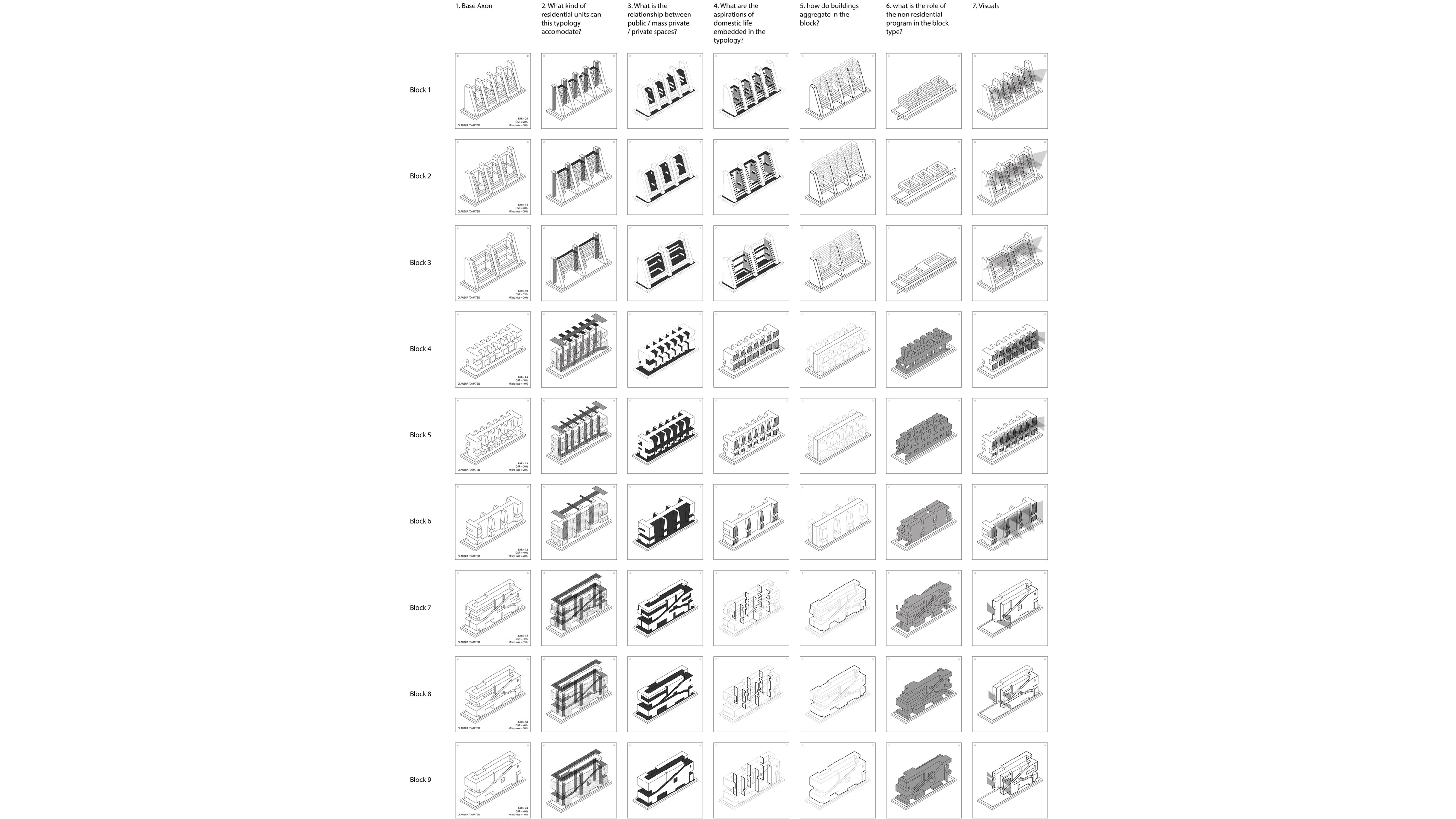
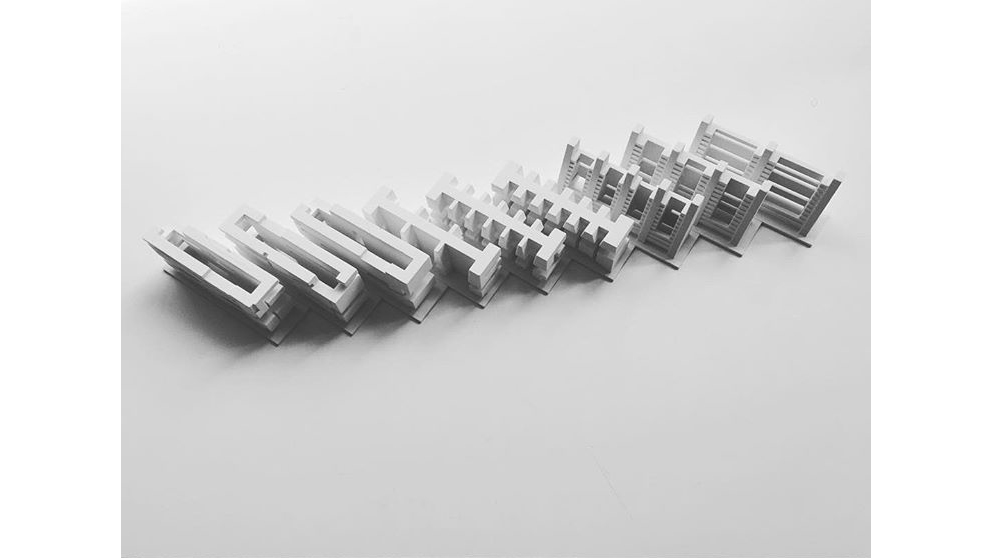
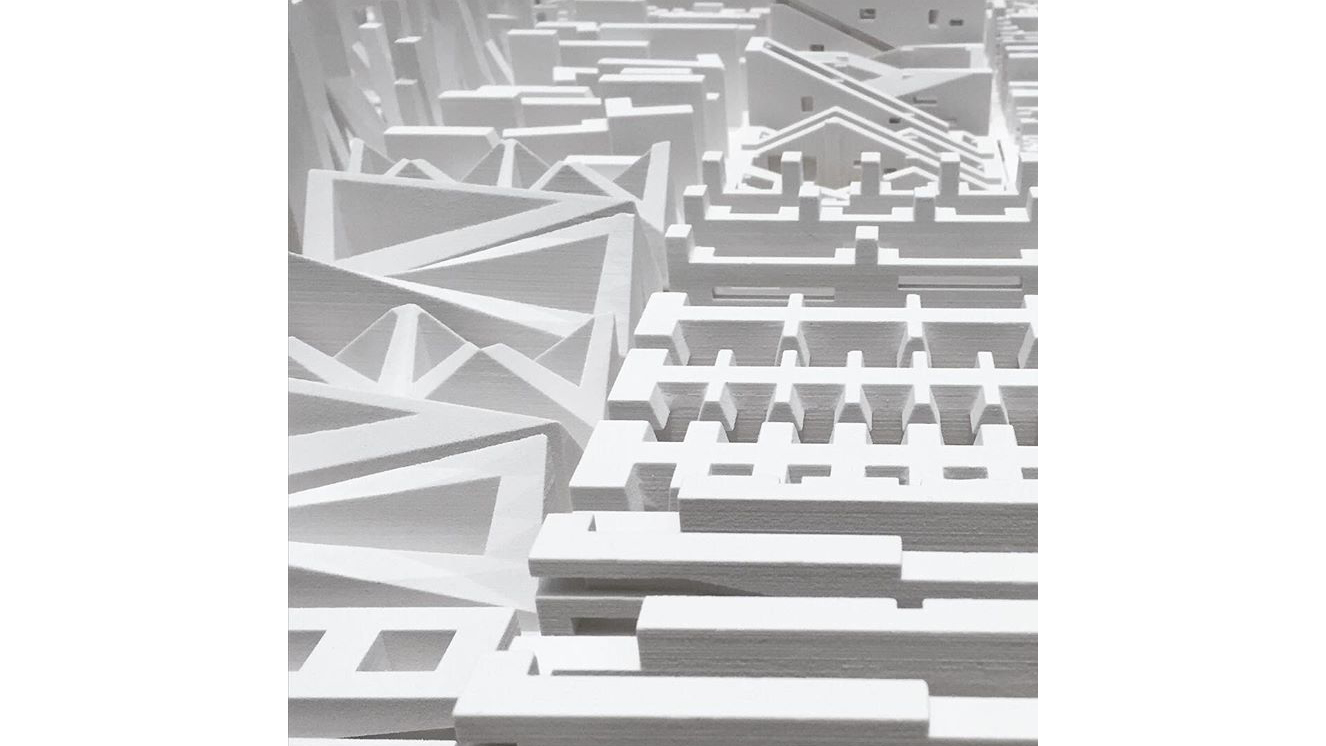
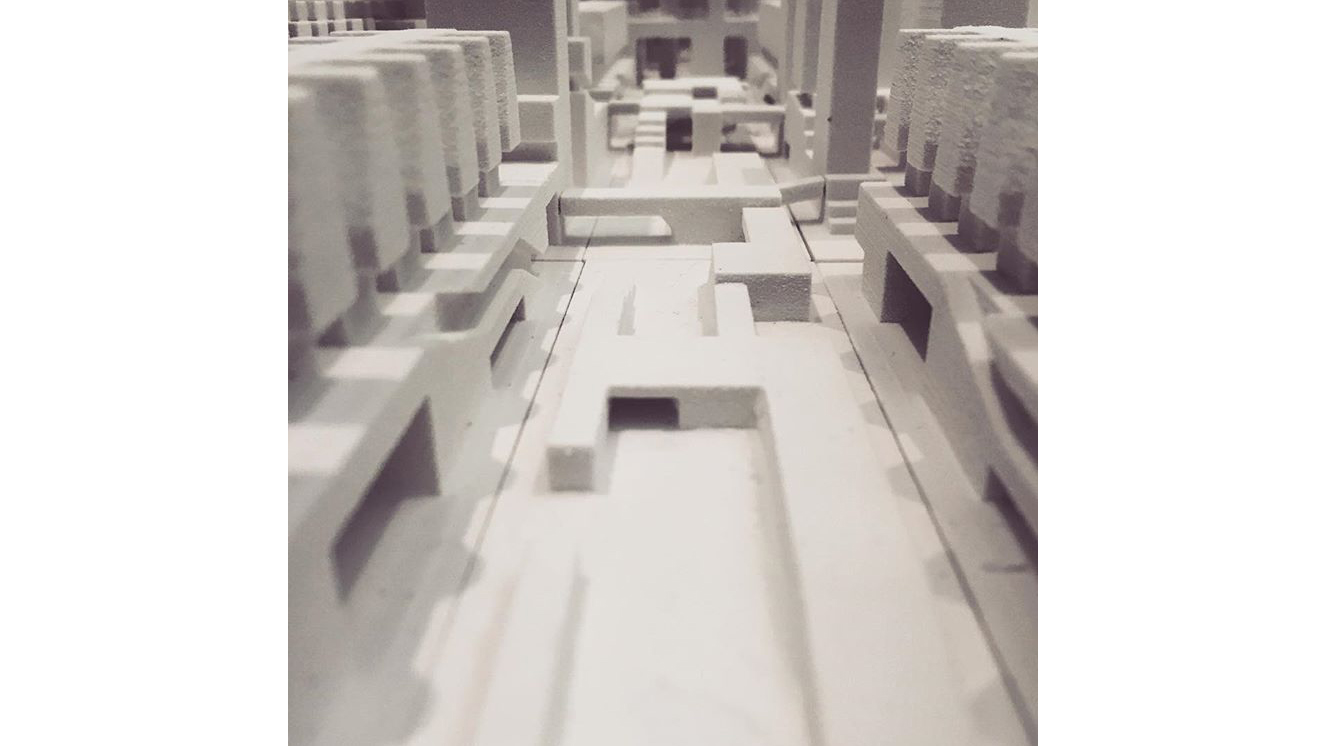
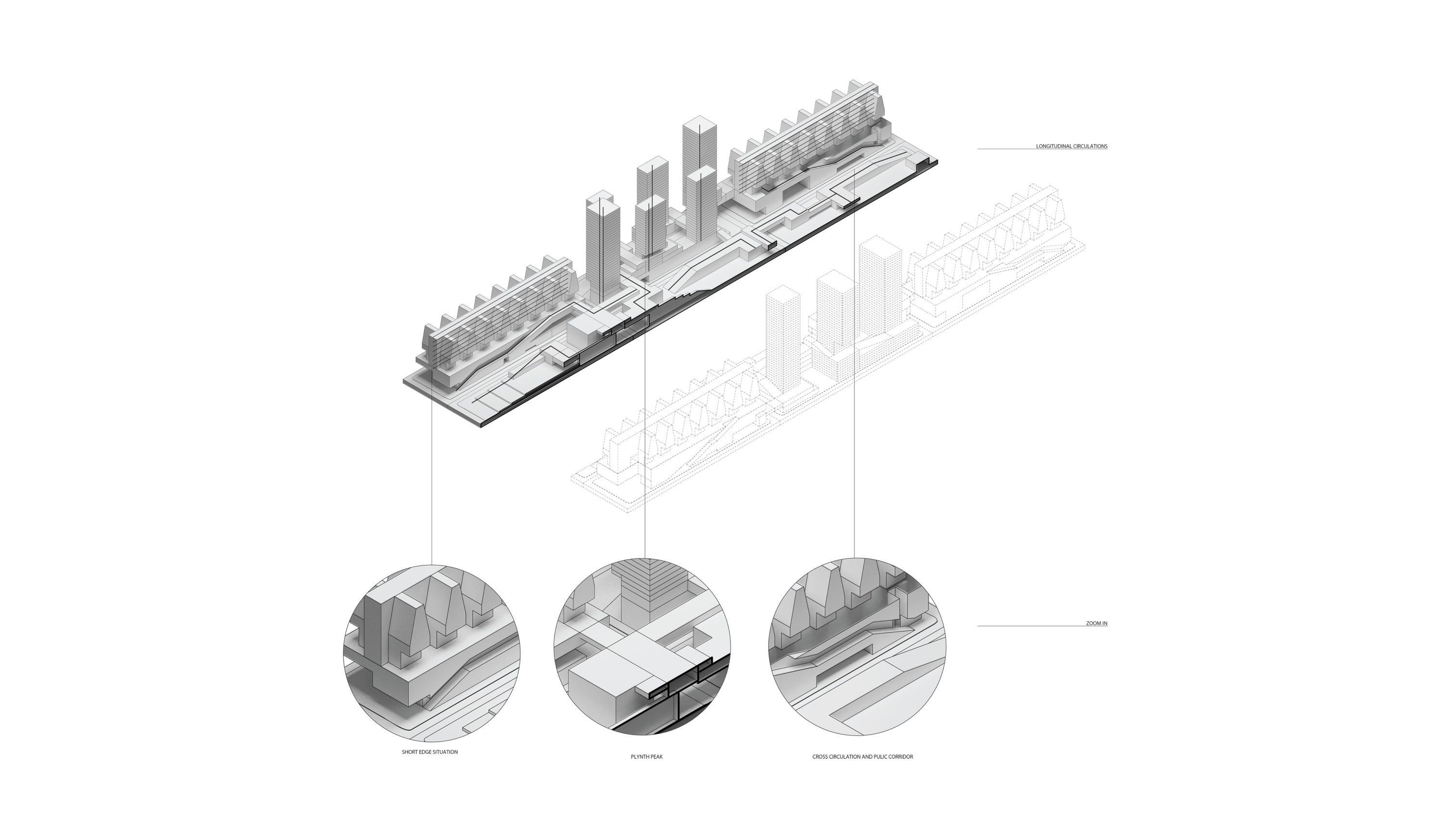
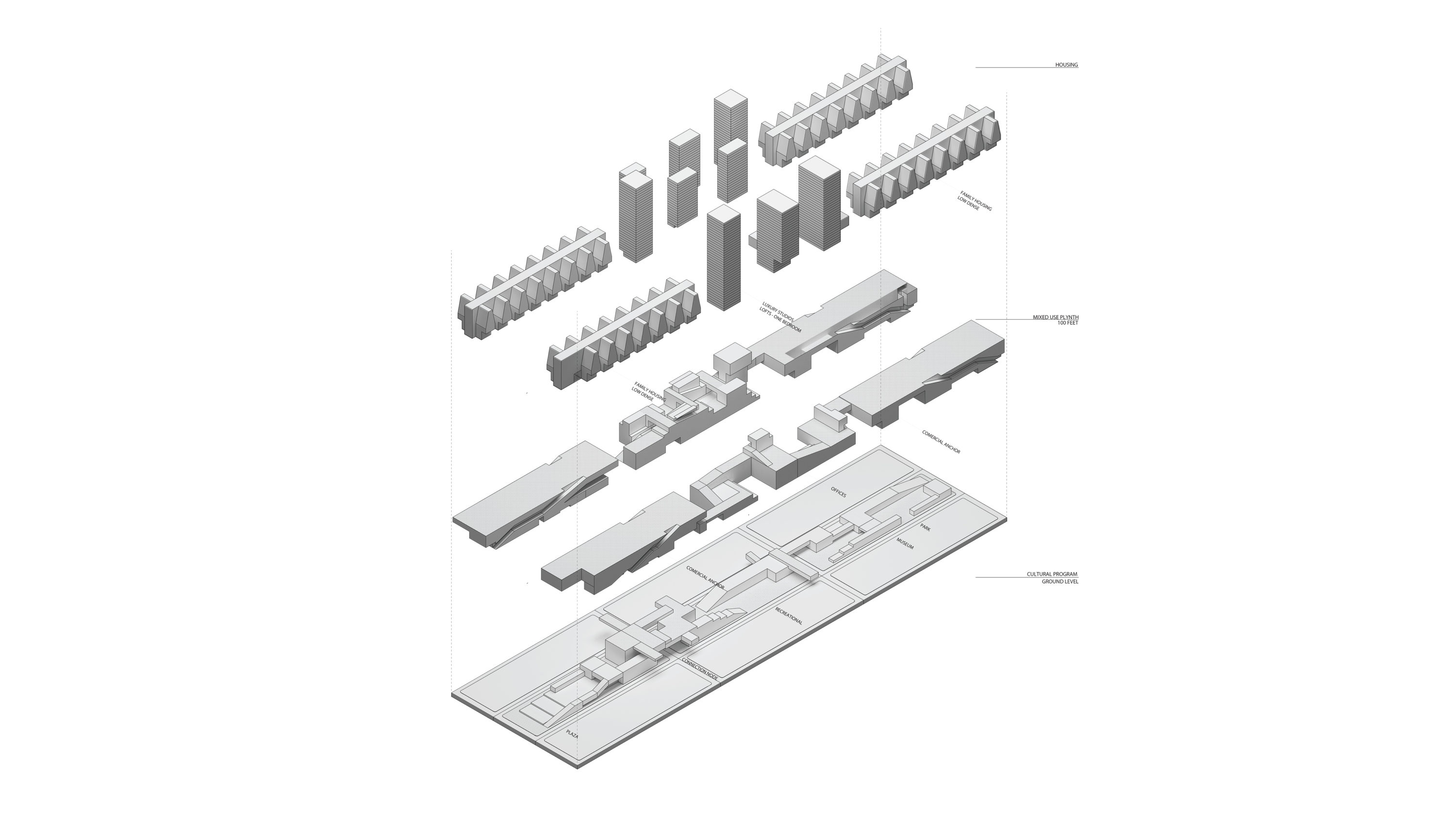
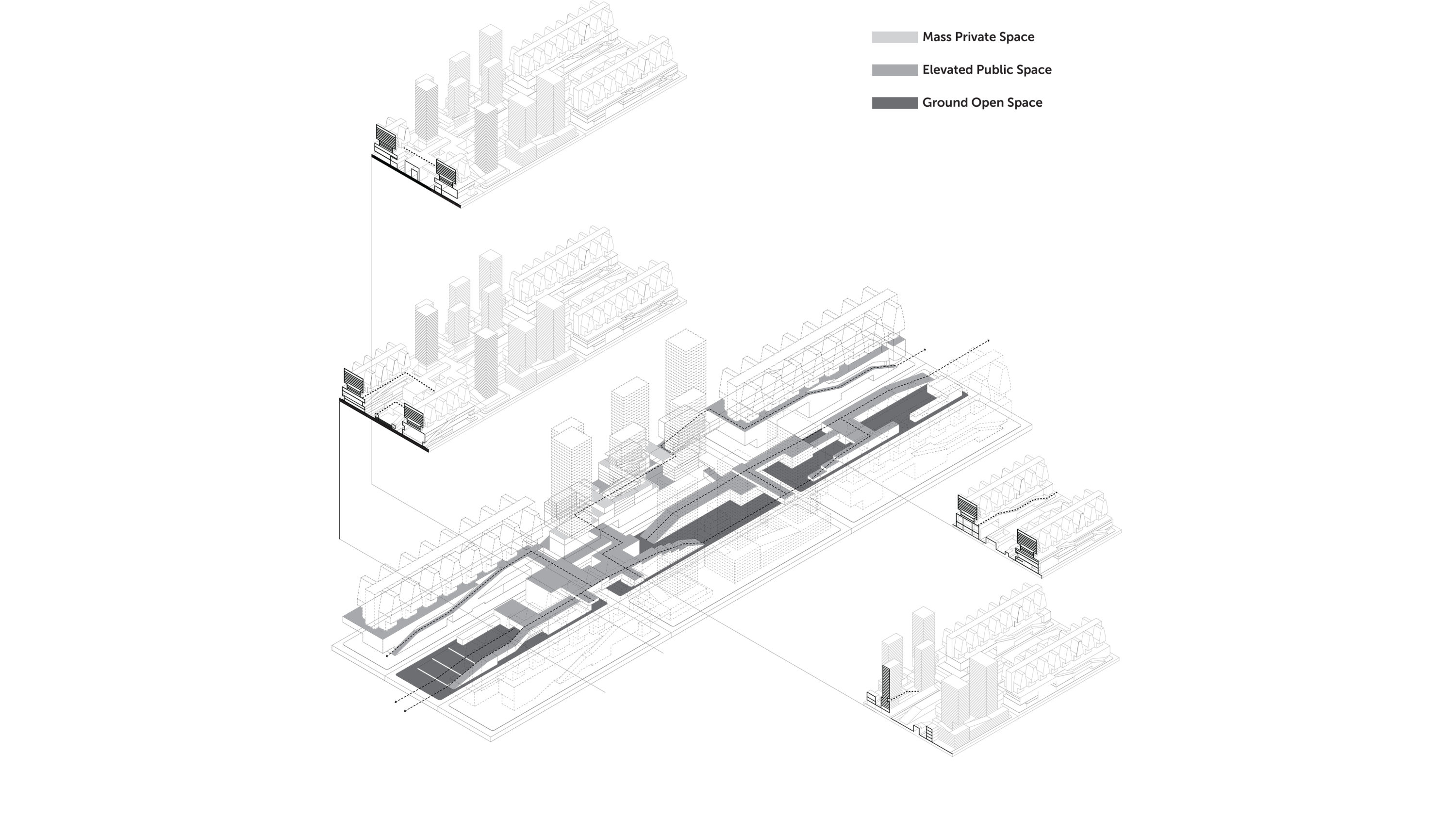
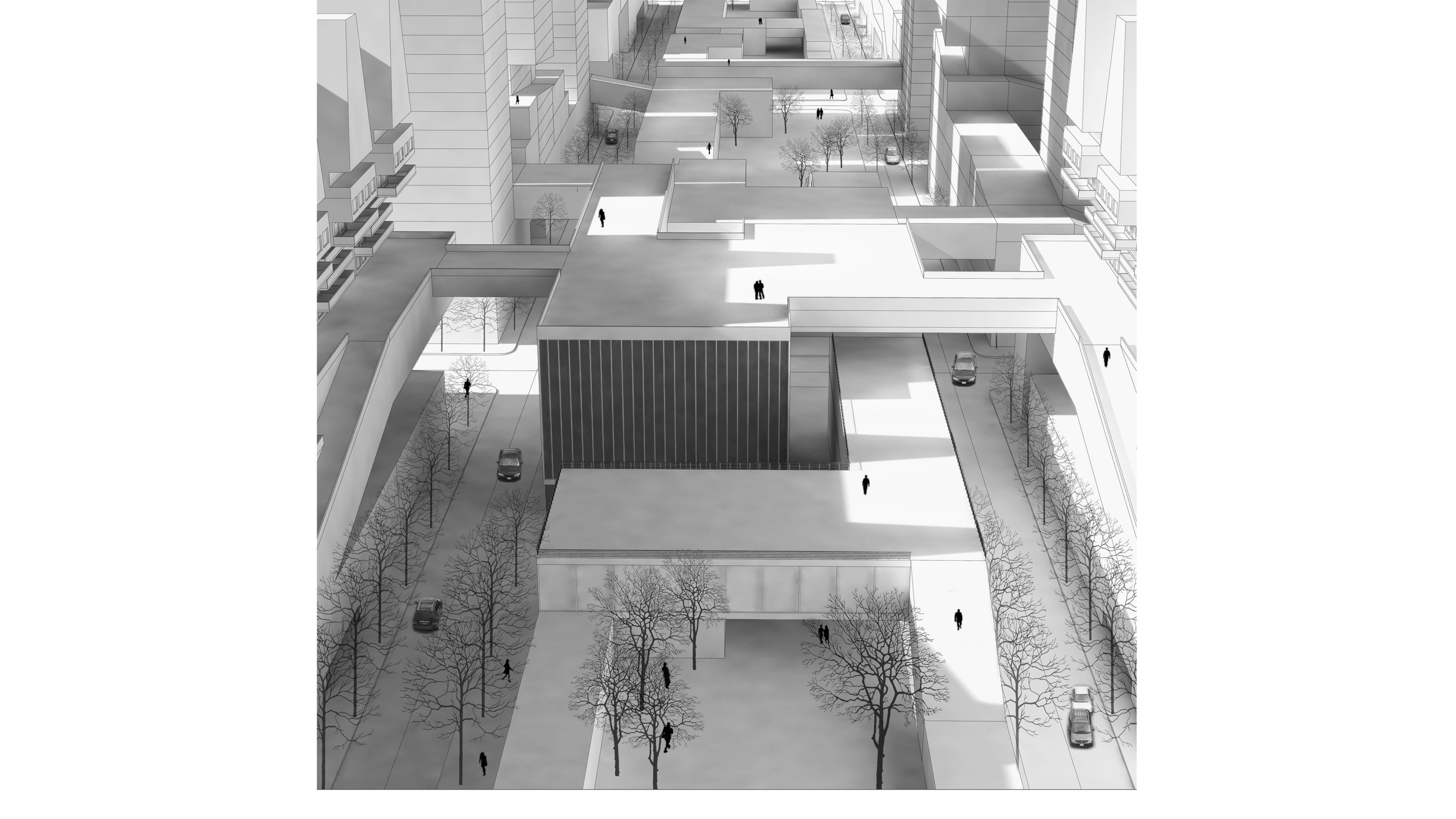
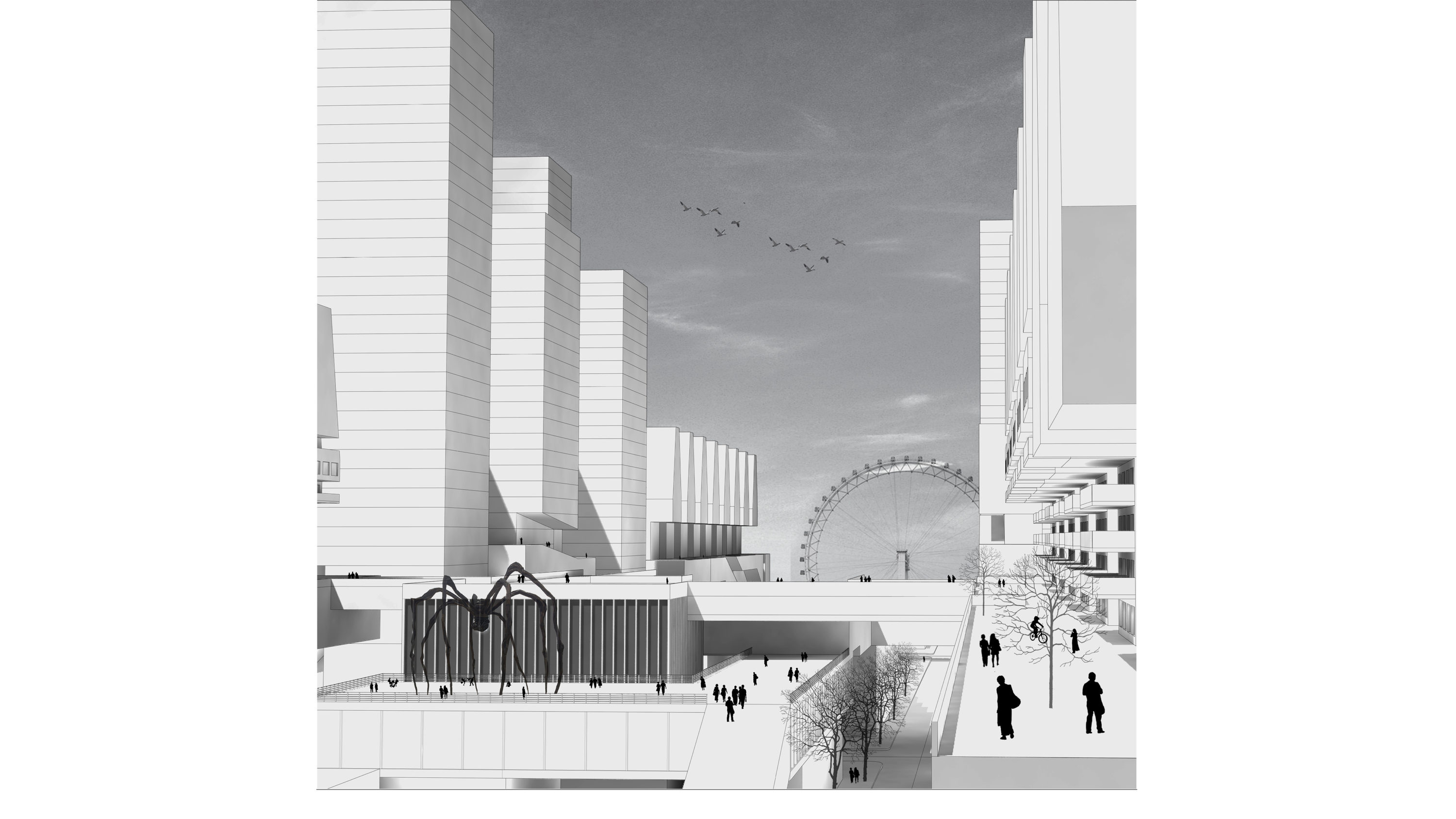
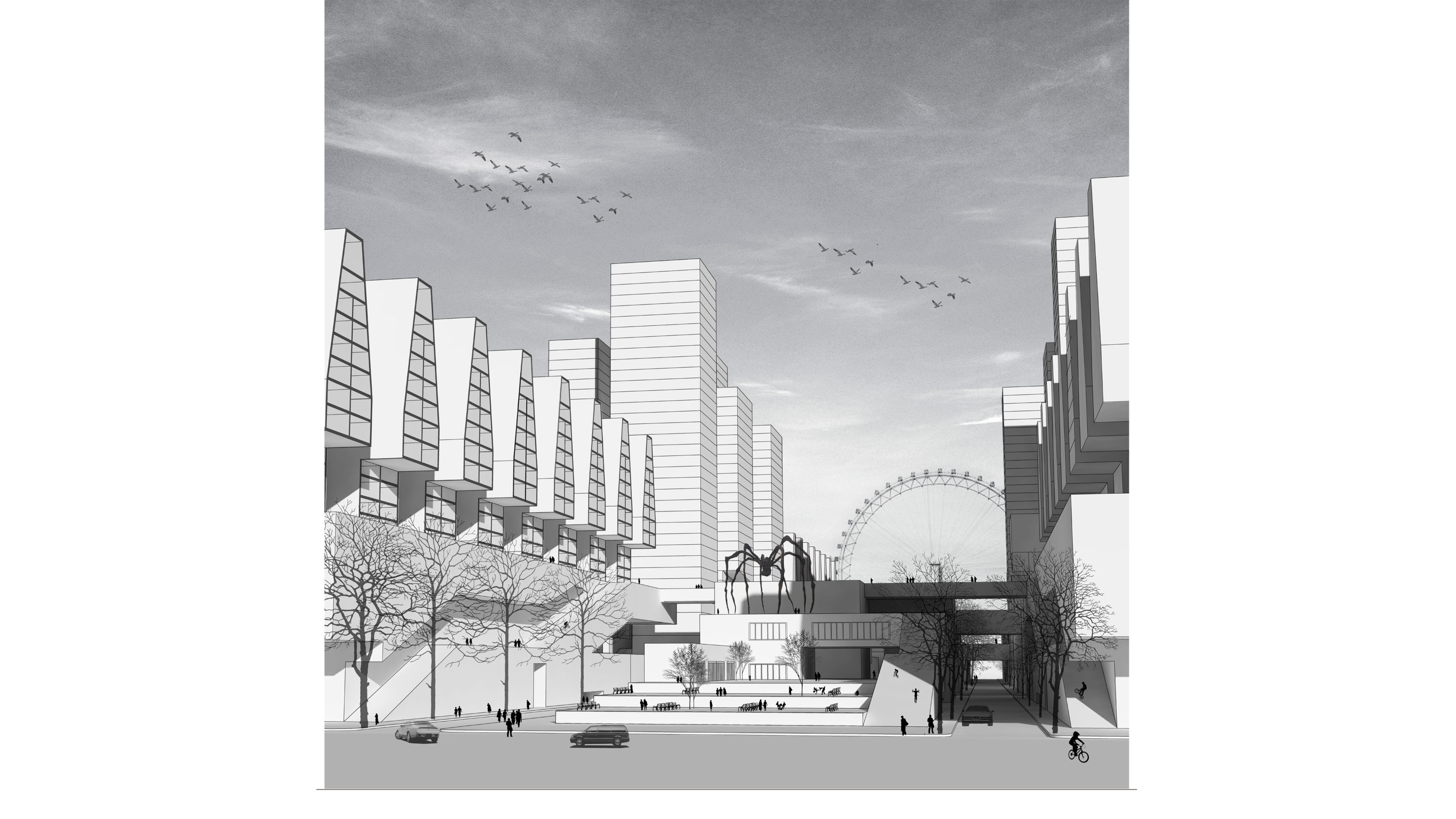
MANHATTAN TYPOLOGICAL SPECULATION
USA, 2015
The grid, as an organizational device, has throughout history worked as a flexible framework that calibrates varying urban densities. In doing so, gridirons across the globe —New York, Barcelona, Buenos Aires, Islamabad— have become rich laboratories for the design of block configurations, always with shifting parameters in order to accommodate a wide set of typologies and evolving programs. The relationship between grid and block sets the stage for the shaping of new forms of urbanity.
Throughout the last 200 years, Manhattan has been throughout the last two hundred years a unique laboratory for new urban prototypes that emerge from this grid/block dialogue. Cleverly analyzed in Rem Koolhaas’s “Delirious New York”, the relentless repetition of the block in plan has engendered extreme diversity in section, resulting in projects that simultaneously respect and contest the strictures of the grid. Rockefeller Center is a case in point.
Today, as the office of Mayor Bill de Blasio pushes forward an aggressive housing agenda —with a strong emphasis on affordable housing—for Manhattan and New York City at large, the moment is ripe to once again explore the architectural and urbanistic potentials of the Manhattan block. In this case, to question how the re-invention of block schemes can shape new modalities of domestic space.
This exercise think of how the Manhattan block, in the abstract, can accommodate greater densities while also developing experimental domestic space typologies that can help us reshape current conventions of urban life. Most approaches to housing design focus on the unit and aggregate to a larger totality, or start with a larger formal strategy and work their way down to the scale of the unit. This exercise will capitalize on the Manhattan block as an intermediate scale from which design strategies can zoom in and out in order to address the relationships between dwelling and city.
(Elements of Urban Design Assignment Description)
The first part of the exercise consists on designing 9 different “variations” for the “courtyard” typology ina typical Manhattan block.
On the second part of the exercise, three individuals create a hybrid from their 9 variations. The result would be a hypothetical fragment of Manhattan were as a group we let tower, bar and courtyard typology to influence each other.
Hence, the proposal consists in elevating the density in the perifery of the city which would allow the middle part to hold services and collective spaces with lower density. Actually allowing to have a rich range of housing developments as well as work and collective spaces.
Core Studio: Elements of Urban Design
Team: Yao Bo - Xiao Zhang - Claudia Tomateo
Harvard Graduate School of Design